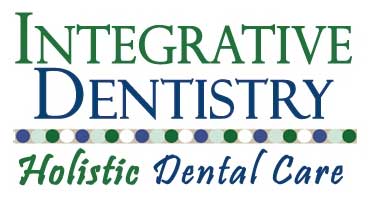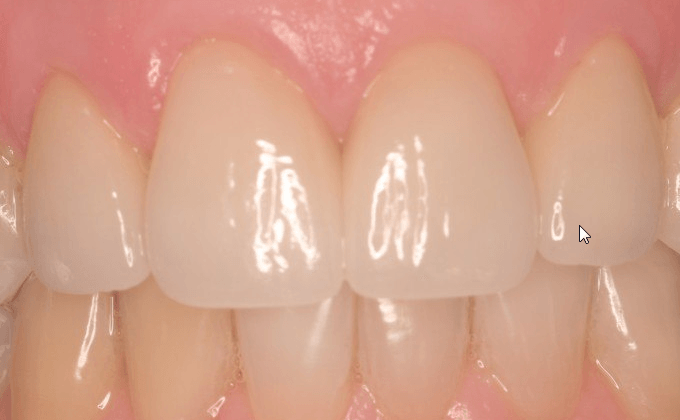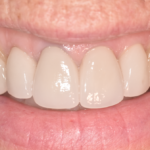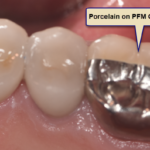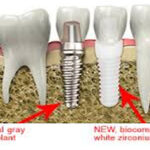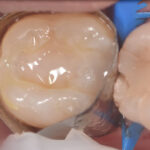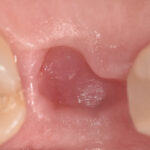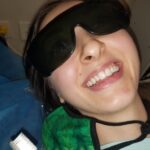In-office Cad Cam technology is generically called Cerac for short. The crowns are milled in the office from a block of porcelain, and then placed and adjusted on the same day. People see this as an advantage, since there is only one dental appointment necessary. However, as a dentist with 30 years of experience, I can usually tell when a crown is fabricated in this way. The first issue is the cosmetic result. Because they are created from a block, Cerac crowns appear bulky and opaque, They don’t have the translucency of natural teeth, an effect that can be achieved with some of the more advanced porcelains that can be layered in.
Another cosmetic issue is that custom staining isn’t possible, as it would be in a dedicated lab. So the color of the Cerac crowns may not blend as well with the rest of the teeth. Additionally, because they are bulky they often don’t fit well and the seal can leave something to be desired. When there isn’t a good fit, decay can sneak in under the crown. This is a concern because every time a crown is drilled on, the risk of a root canal increases.
While it is possible to get a Cerac crown done in one visit, it is unlikely that it will take the 2 hours commonly advertised. Assuming the staff has been well trained in the technology and are very experienced when it comes to making the finished crown, it isn’t possible to get precise, custom milling. So it often takes extra time for the dentist to adjust the crown once it’s in your mouth. That can take a while!
trained in the technology and are very experienced when it comes to making the finished crown, it isn’t possible to get precise, custom milling. So it often takes extra time for the dentist to adjust the crown once it’s in your mouth. That can take a while!
I prefer to use a lab that does precise, beautiful custom work, as you can see in the image below. I work closely with my Swiss-German lab tech, a master technician with 30 years of experience who does all the fine tuning outside your mouth. This is actually a big advantage over the in-office Cerac crowns. Because the lab has a model to work with, the crown comes back from the lab with all the fine detail done, pre-adjusted and custom shaded.
An additional advantage to using a highly skilled lab technician is that he is able to fabricate inlays and onlays with the same expertise he uses with crowns. What this means to my patients is that I can conserve tooth structure. So if a crown isn’t necessary because an inlay or onlay will serve, a similar precise restoration can be created that saves more tooth.
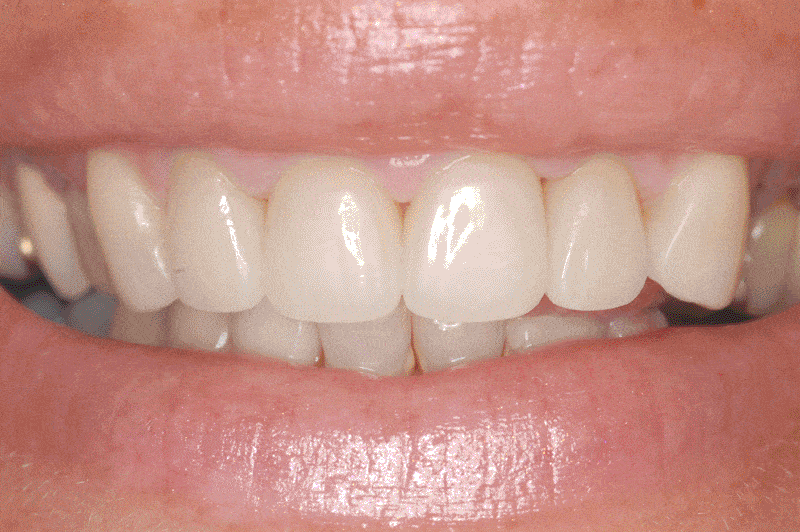 As you can see from the image here, porcelain done in the lab is so good you can’t really tell the difference between the crown and the natural teeth. In this situation we placed veneers on the front 4 teeth only. This is because the patient wanted to be conservative and not drill on any more tooth structure than necessary, which is always a good idea. As you can see it did not compromise the result, as it looks great!
As you can see from the image here, porcelain done in the lab is so good you can’t really tell the difference between the crown and the natural teeth. In this situation we placed veneers on the front 4 teeth only. This is because the patient wanted to be conservative and not drill on any more tooth structure than necessary, which is always a good idea. As you can see it did not compromise the result, as it looks great!
When talking about porcelain crowns, onlays and veneers, wouldn’t you rather have your expensive bonded restorations done by a master technician? You want your porcelain crowns to look natural and beautiful. After practicing dentistry for so many years, I can tell you emphatically that experience matters. That is why I’d rather have a lab technician working with me who matches my experience and who can deliver meticulous results, the only results I am really comfortable with.
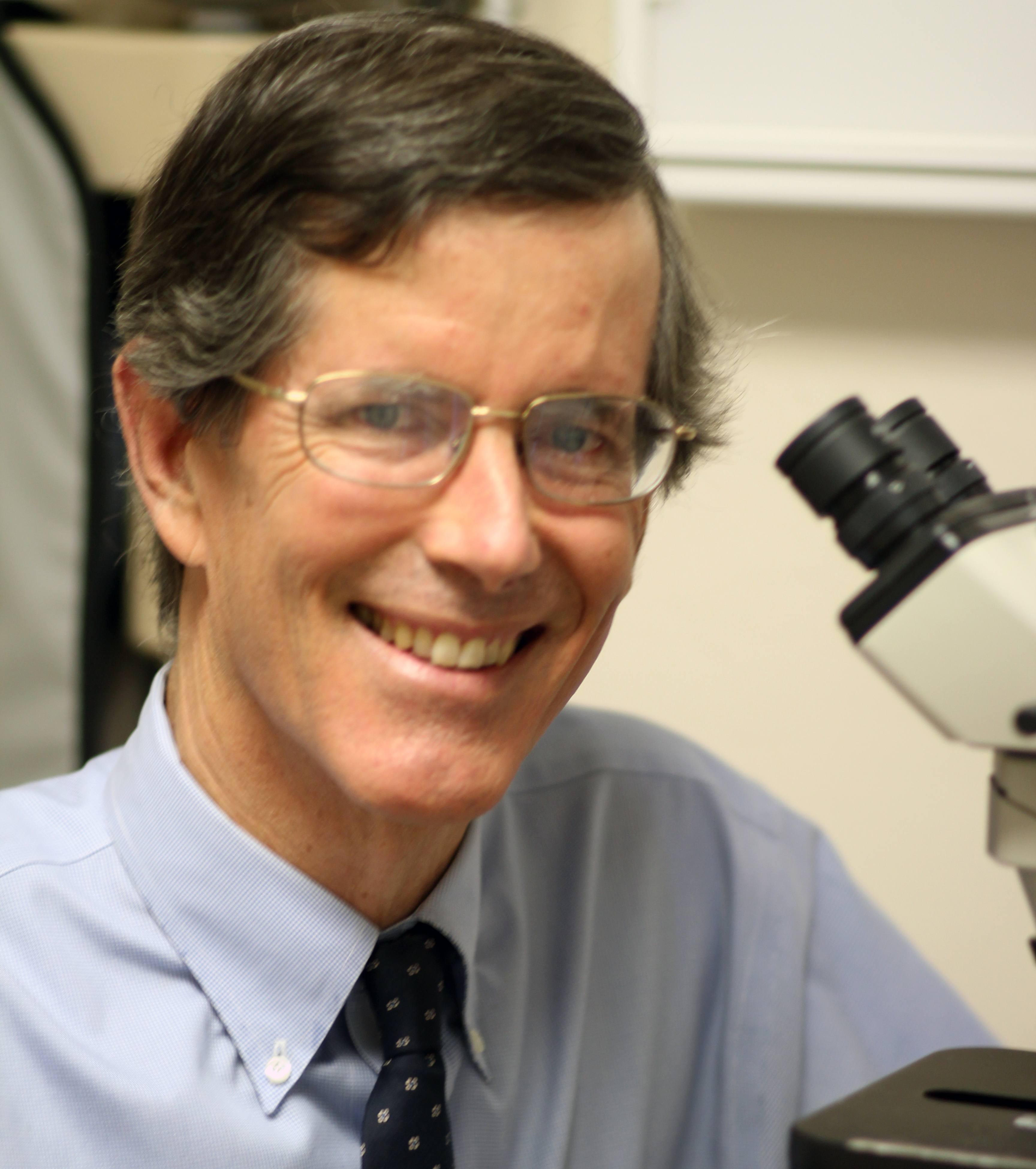
Carey O’Rielly DDS has been a practicing dentist for 35 years. He went to USC Dental School and Duke University for his undergraduate degree. He grew up in Laguna Beach and now lives in La Costa with his wife Victoria, who runs his office.
He began his career by owning and operating a network of six offices in the San Francisco Bay Area. Presently he owns a private holistic practice in North County San Diego’s Encinitas.
Dr. O started looking for solutions to his health challenges that resulted from the stress and environmental toxicity that built up over a ten year period running his dental network. He has dedicated himself to learning about oral systemic problems and how dentistry can affect your health. He has applied what he has learned over the last twenty years to ensure he, his staff and his patients are protected from the chemicals and toxic materials found in most dental offices. He has produced an environmentally friendly office that is also peaceful and calm.
He is an expert on dental materials having looked at hundreds of biocompatibility lab tests over the years. He has identified the most bio-friendly materials to use in his practice and which dental materials can be used to replace metal fillings and crowns, including BPA free and fluoride free ‘white’ fillings. He also uses metal-free Zirconia or ceramic implants and PRF (platelet-rich fibrin) grafting materials which come from the patient’s own blood.
Dr. O’Rielly teaches C.E. courses on the systemic effects of gum disease. He is an expert in using phase contrast microscopy for analyzing dental infections, where he shows patients what kind of microbes, i.e. bacteria, amoeba, and yeasts like candida are populating the mouth and affecting the body as a whole.
He has an educational blog and is writing a book on dental health called ‘Hidden Dental Infections: Healing Root Canals and Infected Teeth with the Erbium Laser’ where he discusses dental nutrition, toxic dental materials and the effects of old root canals on inflammation and overall health.
